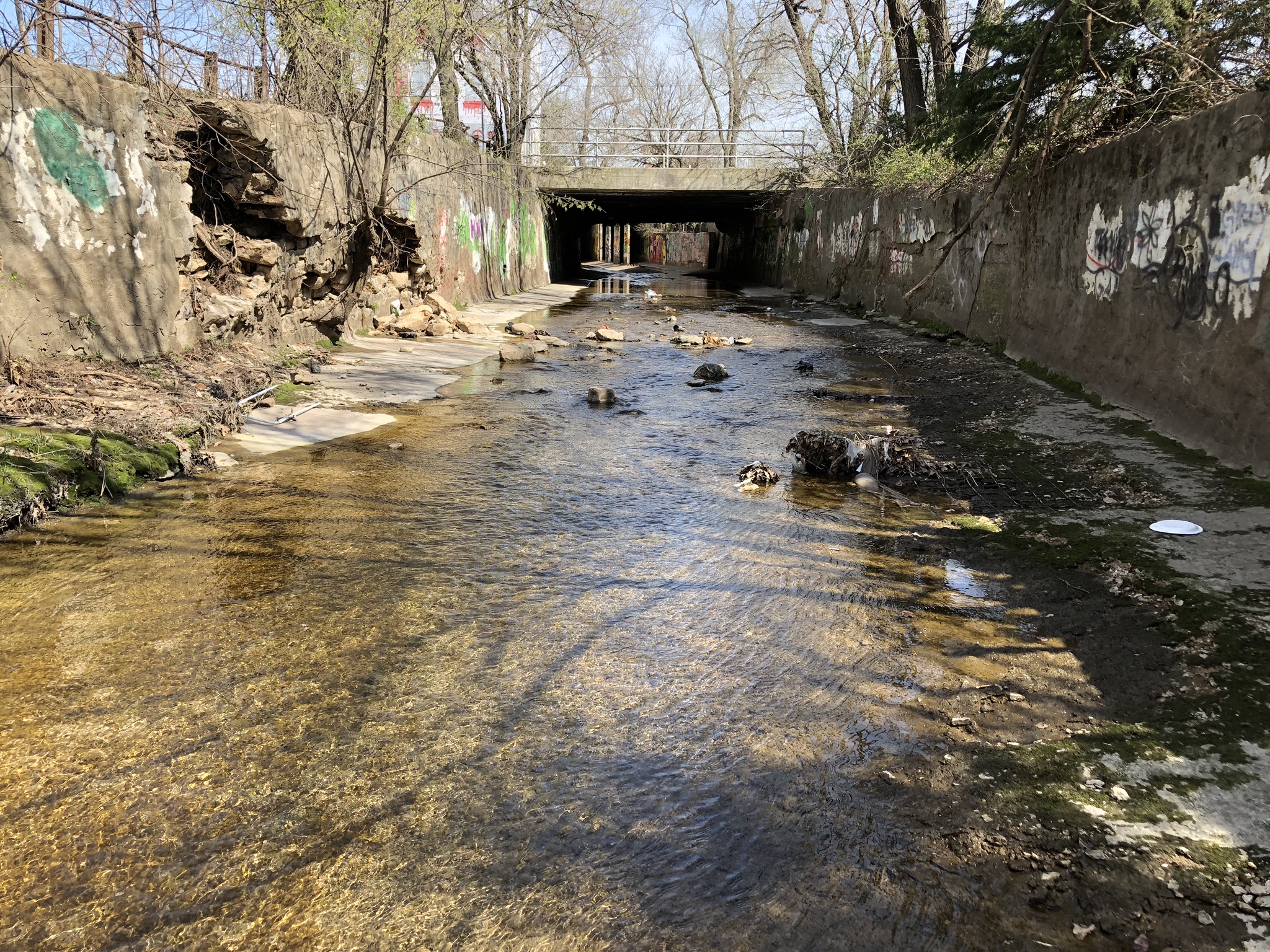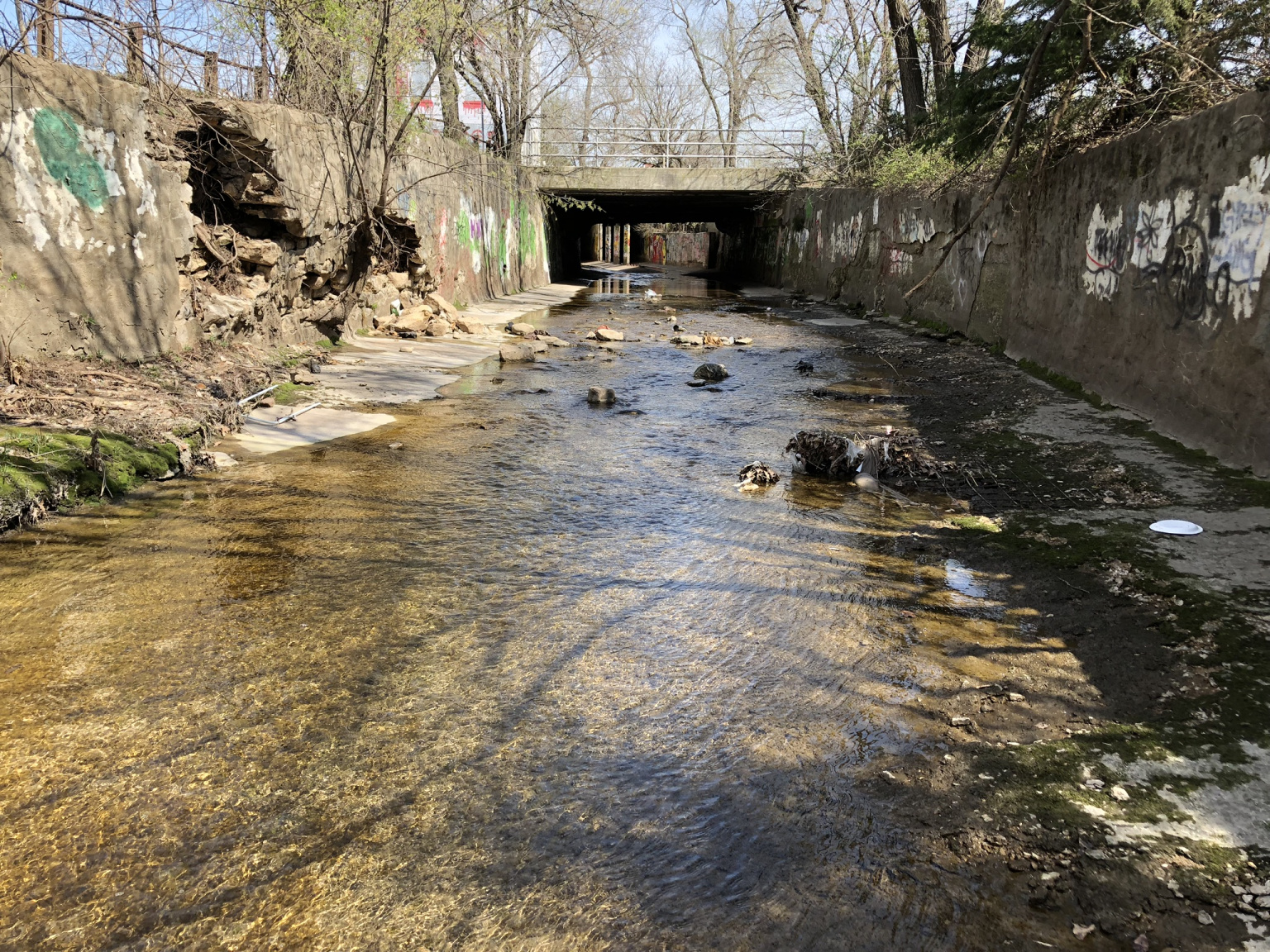
Beginning in January, the City of Springfield will ask the public to help set the vision for the Renew Jordan Creek master plan, examining the potential of the historic creek as it flows through downtown Springfield. An online public visioning survey is set to launch Jan. 6 and lasting through Feb. 7 at renewjordancreek.com.
Visitors to downtown Springfield may not realize that Jordan Creek is flowing beneath their feet. Beginning in the 1930s, it was channeled through a series of underground culverts. Renew Jordan Creek is a multi-phase effort that intends to “daylight” the creek and bring it to the surface, helping to reduce flooding and improve water quality. The project is also viewed as an opportunity to provide an urban amenity and catalyst for further redevelopment along its path through downtown.

Phase I comprises two large blocks of the creek, bordered on the east by Boonville Avenue, Water Street on the south, Main Avenue on the west, and Mill Street on the north. Much of the project area is within the Federal Emergency Management Agency (FEMA) floodplain within downtown Springfield.
The upcoming public visioning survey will gather input on the public’s vision for this Phase I site and will also pose questions about other underutilized spaces along Jordan Creek’s footprint.
“As we began the design phase for Renew Jordan Creek, we realized we needed to look outside the boundaries of the current-funded project and look at a wider span of the Jordan Valley,” said City of Springfield Quality of Place Director Tim Rosenbury. “We don’t want this project to be an island of green, but rather it needs to connect to a much larger vision and master plan for the area.”
Input from the public visioning survey will be utilized in a highly collaborative design process involving citizens and project stakeholders scheduled for April.
Phase I of the project is funded through Springfield’s Level Property Tax and is estimated to cost approximately $7 million. Future phases are still in the planning stage and are currently unfunded.
About Jordan Creek
Jordan Creek runs through the heart of downtown Springfield, two blocks north of the square. The stream was once pristine and unspoiled, sustained by natural springs. In 1830, Springfield’s founder John Polk Campbell and his family were the first white settlers along its banks.
Over the years, settlers began complaining about the flooding of the creek and used it as a garbage dump. As more settlers moved to the area, the stream became polluted and stagnant. As Springfield prospered, additional development occurred along the creek, concentrating rainfall to flood the Jordan Valley. In response, in the early 1930s, the creek was enclosed with massive twin box culverts, two-thirds of a mile long, to help contain flooding.
The combination of industrial users vacating Jordan Valley, postwar efforts to improve health and address pollution and recent efforts at controlling flooding upstream have created new opportunities for Jordan Creek. In the late 1990s, the community cast a vision for Jordan Valley Park, an almost two-mile long, 150-acre linear park with the creek running through most of it. The east and west ends of the park were envisioned to consist of large passive open spaces with the center compressed into an urbanized area one block wide and several blocks in length.
Since 2014, Jordan Creek has been listed on the Missouri Department of Natural Resources’ 303(d) List of Impaired Waters due to impairment by polycyclic aromatic hydrocarbons (PAHs) in stream sediment. Partial funding for the Renew Jordan Creek project is provided by a Section 319 grant from the Environmental Protection Agency (EPA) for stream bank and soil restoration, tree plantings, and disconnection of impervious surfaces to provide a buffer from loading of PAHs.
Renew Jordan Creek is only one part of a big-picture planning effort and other large-scale improvements going on downtown. The City’s Forward SGF Comprehensive Plan focuses on the Renew Jordan Creek phase I project as a future catalyst site. The phase I project is also anticipated to function as a downtown anchor amenity along the route of the federal grant-funded Grant Avenue Parkway.


